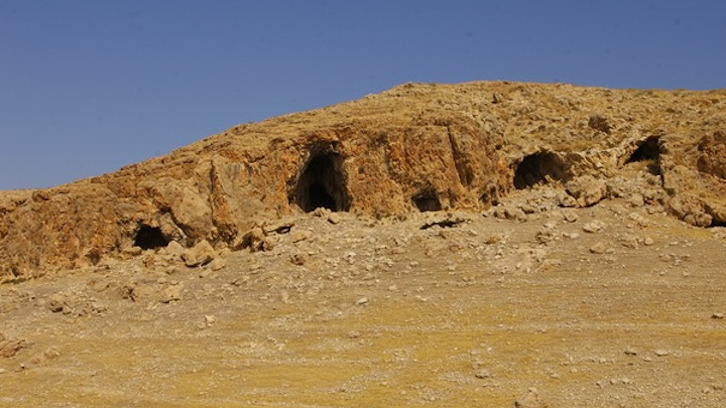The deposit of Mughr el-Hamamah: insights into the transition period from neanderthals to modern humans

An international team with the involvement of researchers from the Department of Prehistory of the UAB, has applied advanced techniques to analyze the Mughr el-Hamamah cave, an Upper Paleolithic deposit key to understanding the coexistence of Homo neanderthalensis and Homo sapiens. The results indicate human occupation during the Early Upper Paleolithic and reveal the presence of an ancient Mediterranean forest in contrast to the present-day climate.
Mughr el-Hamamah, which means “dove cave” in Arabic, is a site in northwestern Jordan known for its prehistoric finds dated between 39,000 and 45,000 years ago. Numerous stone tools, hearths, and animal and hominid bones have been unearthed there. The cave is of huge importance to paleoanthropologists because this was the period during which Homo neanderthalensis lived in Europe and parts of Asia, while Homo sapiens migrated to Europe from Africa. In more recent times, the cave was used by shepherds for shelter and stabling of their animals, resulting in a partial disturbance of the archaeological deposit.
Our study, led by the postdoc Mónica Alonso-Eguiluz from the Archaeology, Environmental Change and Geochemistry research group (AMGC) at the Vrije Universiteit Brussel (VUB), and with the final supervision of Professor Rosa Maria Albert, from the Department of Prehistory of the UAB, has applied a multiproxy approach to better understand the state of preservation of the archaeological deposit and reconstruct the cave environment during the Early Upper Paleolithic.
Specifically, we used high-resolution microrheological techniques, such as micromorphology, FTIR spectroscopy and phytoliths. Onthe one hand, micromorphology, combined with FTIR spectroscopy (which gives information about the mineralogy of the sediments) explains the biography of the deposit: how the deposit was formed and what is its state of preservation. On the other hand, along with FTIR, we can conduct the phytolith analysis. Phytoliths are silica plant microremains that form in the cellular structures of (certain) plant tissues. They appear in sediments when organic matter disappears, so we can obtain information about the plants present in a given deposit.
By combining a range of techniques, we were able to better understand the complex events that have taken place here over the millennia. The main challenge was to clarify the extent to which shepherds’ activities altered the deposit. We were able to determine that the main shepherd disturbance took place in the middle part of the deposit. This is important because it gives us certainty that the archaeological remains from the other areas of the cave derive from Early Upper Paleolithic activities. Also, we were able to detect post-depositional processes, such as low-energy water sources, occurring on the western area of the cave and which dissolved bones, but not other archaeological remains (i.e., phytoliths or charcoal).
It was particularly interesting to note that the prehistoric people who used the cave gathered edible plants there. Those remains indicate the presence of a Mediterranean woodland 39,000 to 45,000 years ago. The team also found remains of moisture-loving plants, related to the presence of the paleolake Lisan. This is in stark contrast to the currently desert climate in the area and it could be a clue as to why the cave was occupied during the Early Upper Palaeolithic. In any case, our study provides the basis for developing future research at Mughr el-Hamamah.
Rosa María Albert
Department of Prehistory
Universitat Autònoma de Barcelona
References
Mónica Alonso-Eguiluz, Michael B. Toffolo, Chantel E. White, Eleni Asouti, Elisabetta Boaretto, Liv Nilsson Stutz, Aaron Stutz, Rosa María Albert (2024). The Early Upper paleolithic deposit of Mughr el-Hamamah (Jordan): Archaeobotanical taphonomy and site formation processes, Journal of Archaeological Science: Reports, Volume 55, 104471, https://doi.org/10.1016/j.jasrep.2024.104471


